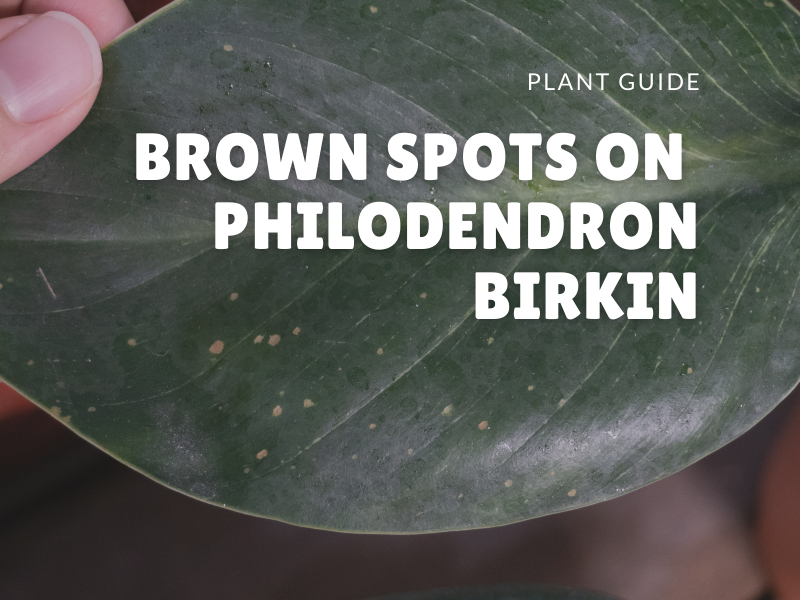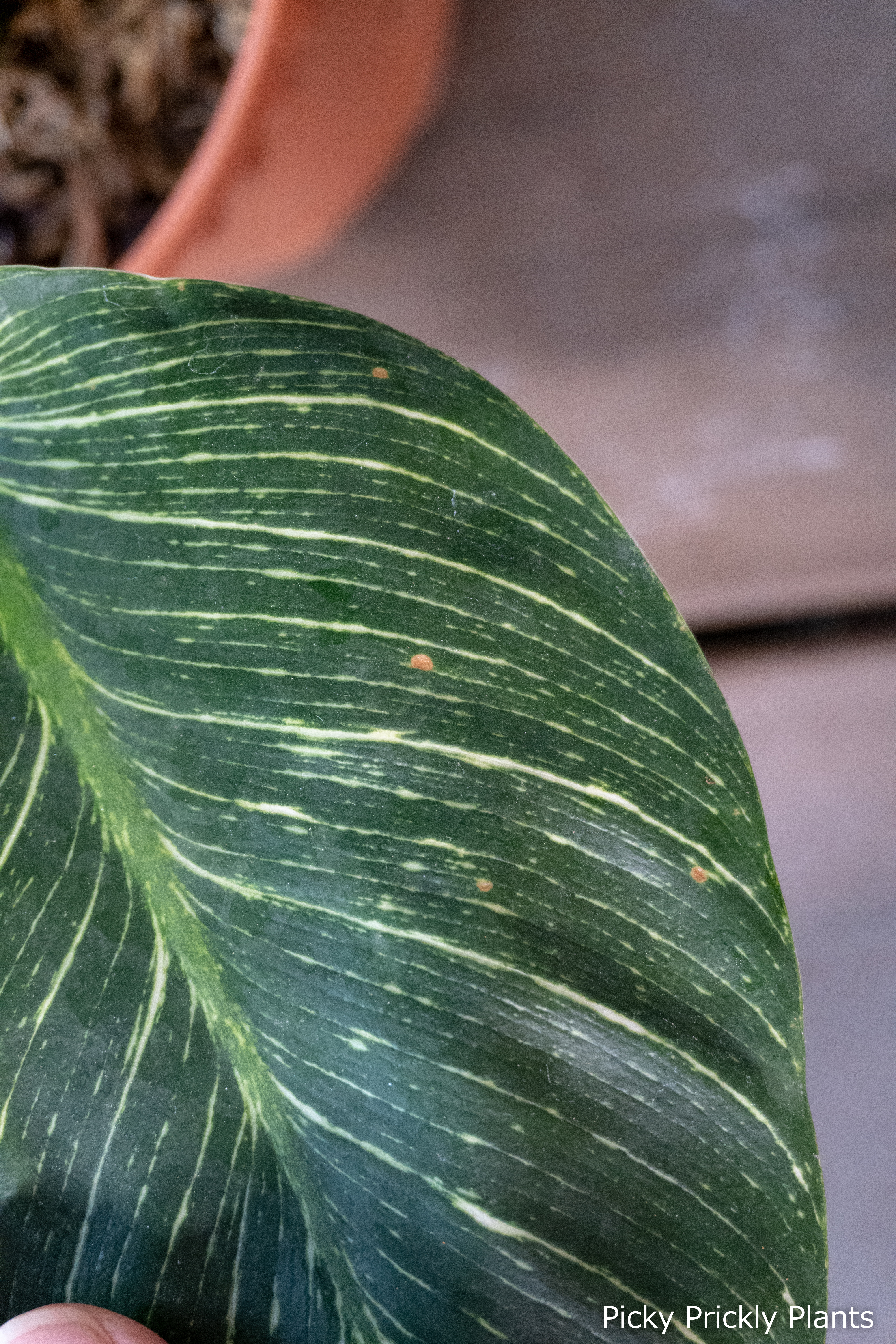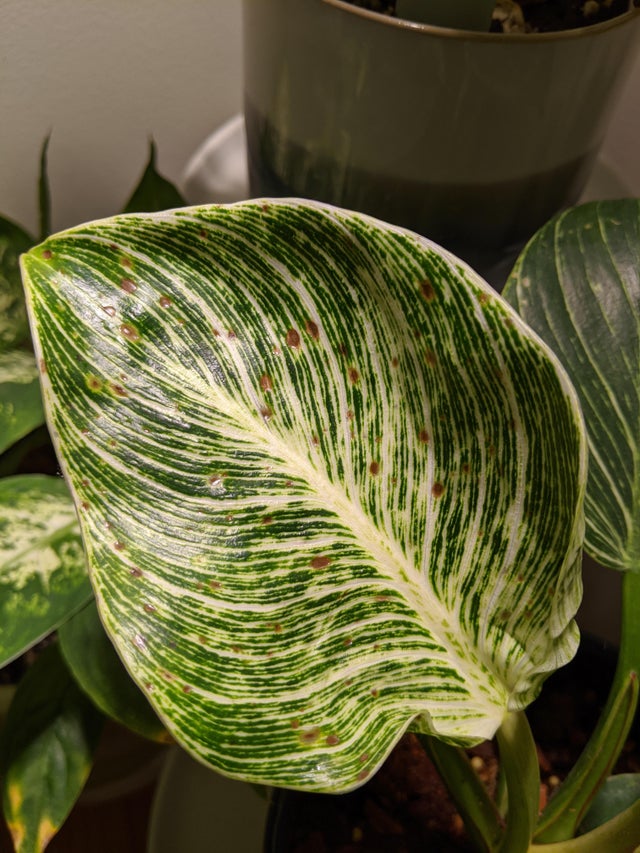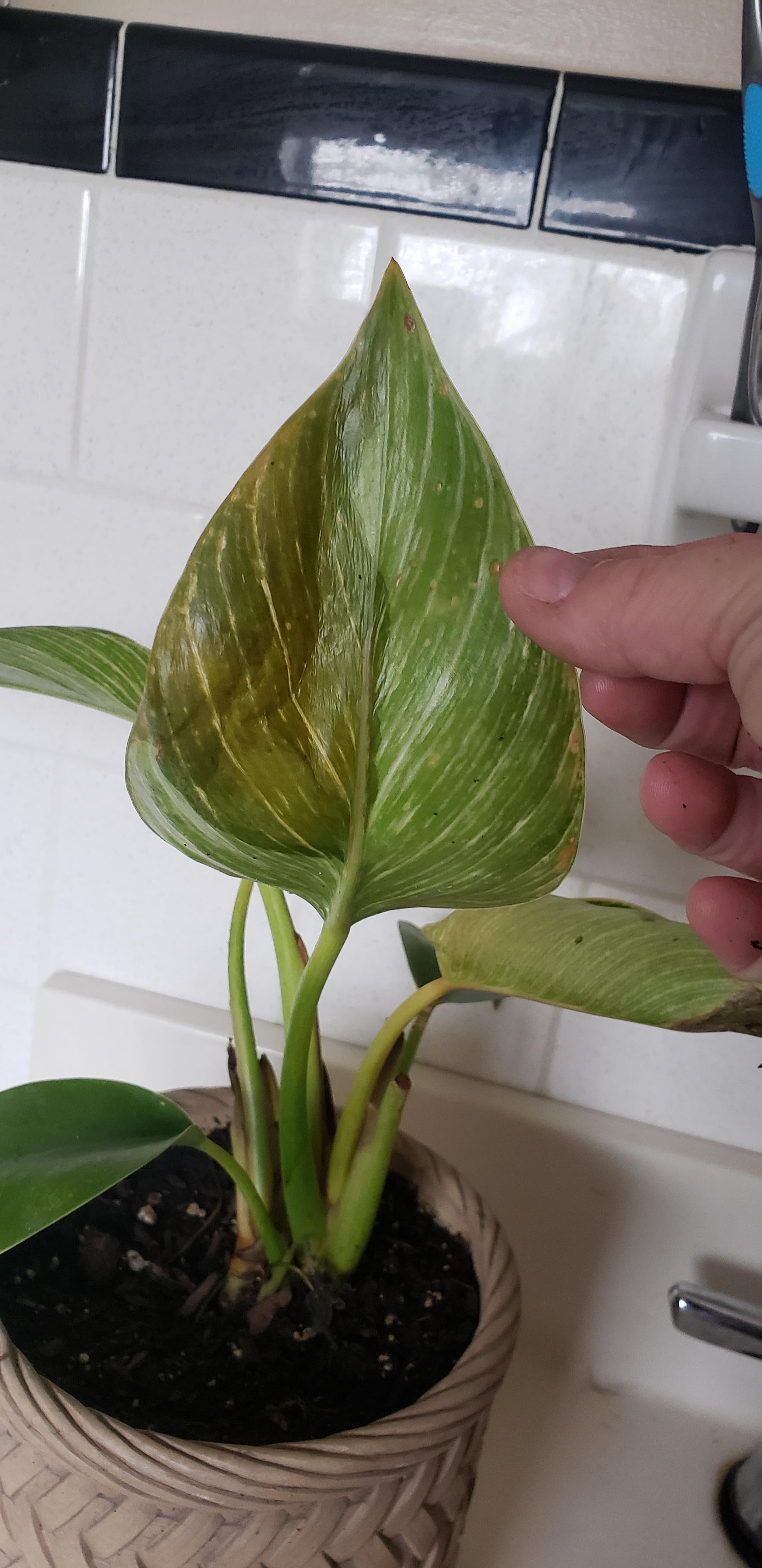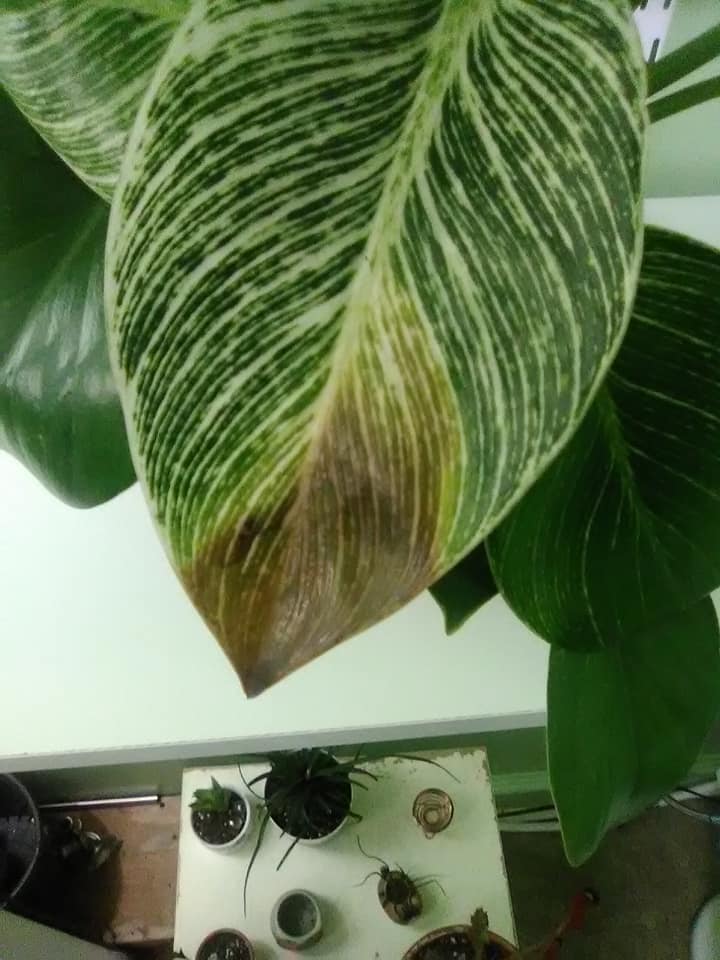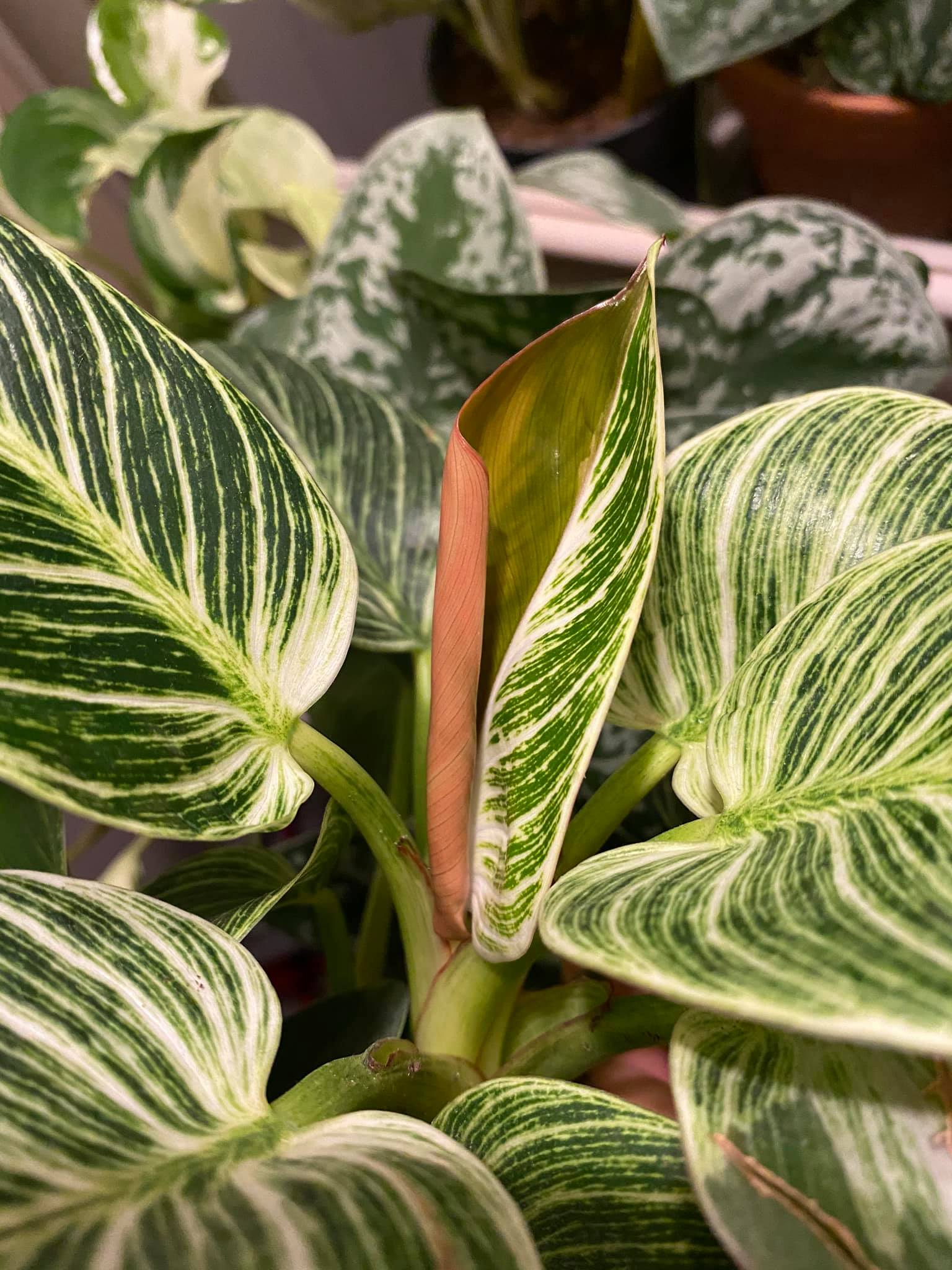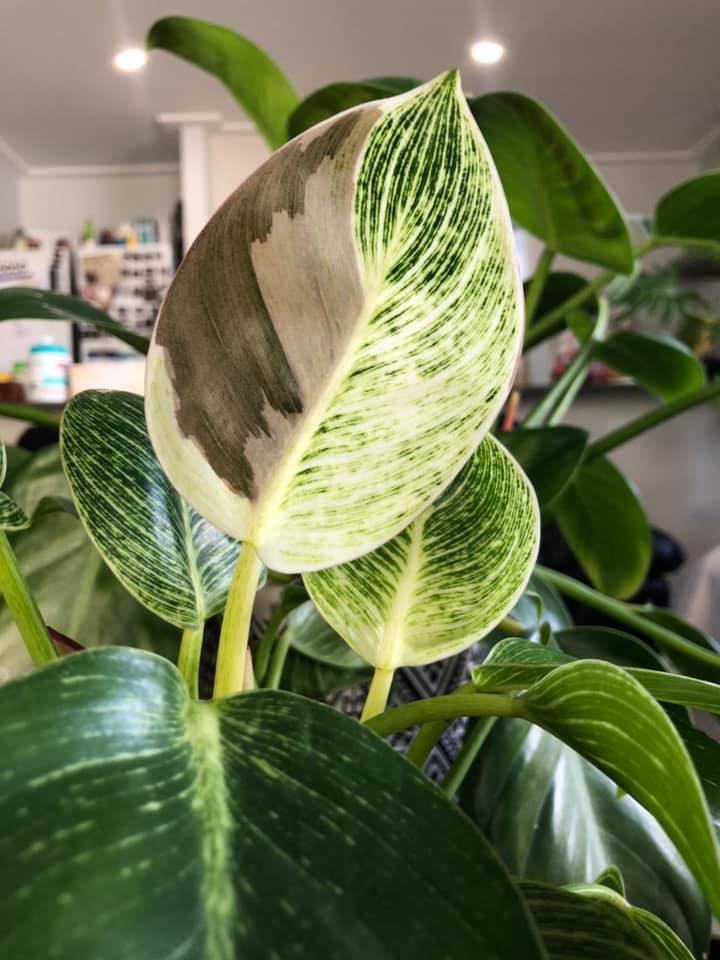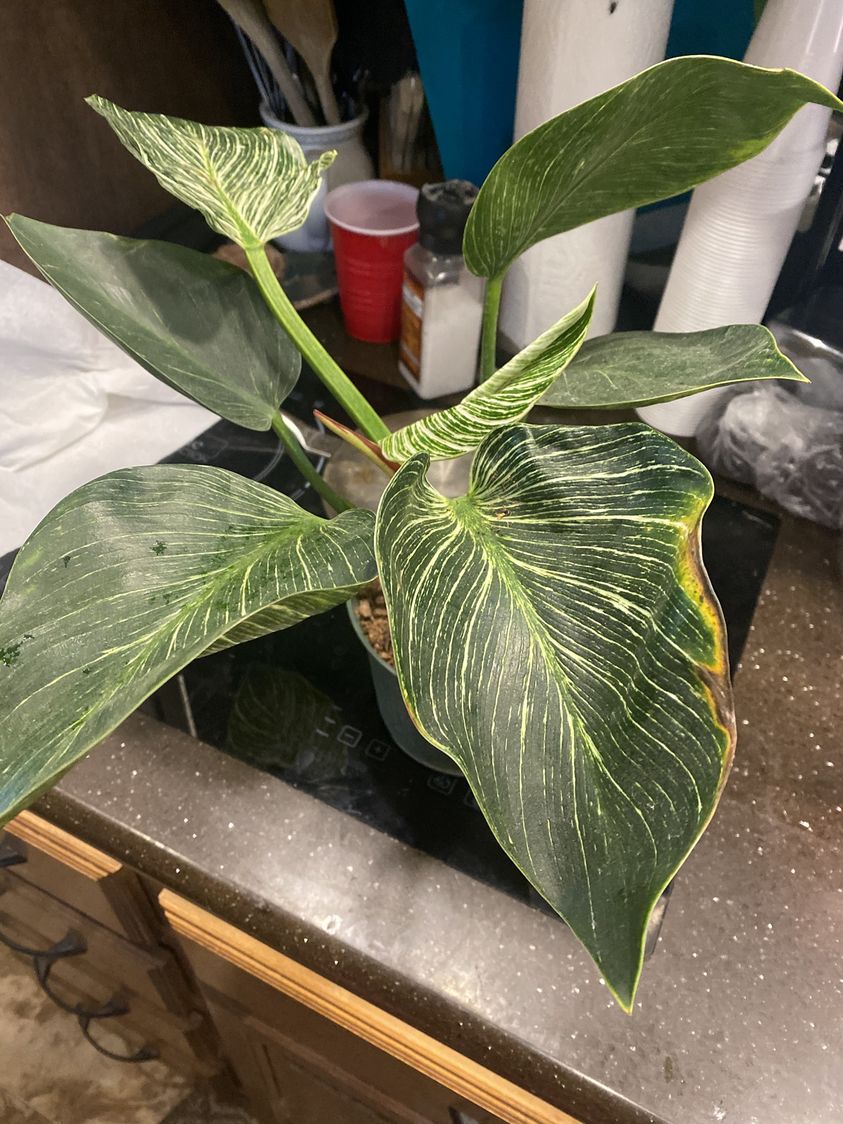If you are worried about the brown spots on your Philodendron Birkin, you are not alone! While we are growing this beautiful plant, we have seen quite a few instances where brown spots start growing on the leaves.
In our local community, we also found out that a lot of people faced the same issue. In this post, we will compile a list of photos on some examples of common problems.
Brown spots on leaves
This is the most commonly faced issue with Philodendron Birkin. Random speckles of brown spots that appear only on the leaves. Some people say that they are extrafloral nectaries (EFNs). A sure sign of EFNs are sticky droplets of liquid on the underside of the leaves. We have seen EFNs on our other philodendron and they look nothing like this on the Birkin. We might be wrong on this. 🤷♂️
Our prime suspect is a type of fungal infection from overwatering or bite marks from sucking insects. We solved the issue by spraying the leaves thoroughly with fungicide and only water the plant when the soil is dry. Doing so seems to work and we don’t see the spots on new leaves anymore.
Do not be too stressed out with this issue. We have seen such brown spots in almost all Birkins, even in reputable nurseries. As long as the plant is healthy and growing, I wouldn’t be too worried about it.
Brown soft patches
We have not seen this problem on our Birkin but it has happened a few times on our other Philodendrons. This is very likely due to an infection. Firstly we would cut off the leave to prevent it from spreading. Then, spray the leaves and water the plant with fungicide. Lastly, reduce the watering frequency to prevent water build up in the leaves.
Large brown patch
Sometimes, new leaves grow out with a huge brown patch. From what we read, this is due to a mutation. Birkin originated from a hybrid Philodendron ‘Rojo Congo’ and is massed produced by tissue culture to meet market demands. Thus, this cultivar might not have very stable genes and can produce varied leaves like this.
Brown edges
Yellowing edges can be hard to diagnose. If you only watering your plant sparingly, it might be due to salt build up in the soil. If this is the case, you will need to use a well-draining soil and fully water the plant to flush out all the built up fertiliser.
Yellowing leaves
If entire leaves are turning yellow without any browning, it should not be caused by external factors such as pests or fungus infection.
In the photo above, we left the soil too dry for a few days and some of the older leaves turned yellow. This could also be due to a lack of nutrients. As we stopped watering, the roots were not able to bring water (and thus nutrients) up to the leaves. The leaves were also curling inwards which is a sign of underwatering.
Hope this post was helpful. Check out our other posts that goes more in-depth into treating fungus infections and general guide on brown spots on indoor plants.
Frequently Asked Questions
Sadly, when you see the brown spots, it is most likely that the leaf was already damaged. Your focus should be on preventing the brown spots from worsening or spreading. If done right, your Birkin will start to grow beautiful leaves and the old ones can be removed (and forgotten).
Why is my Philodendron Birkin losing its white variegation?
Philodendron Birkin is a cultivated variety that have unstable genes. Not all the new leaves will look the same. We observed from our self-propagated Birkins that putting them in a bright spot helped with encouraged more variegation to develop on new leaves.
Should I cut off the brown or yellowing leaves?
Unless the plant is young or only has a few leaves left, it is always better to cut off browning or yellowing leaves. Doing this not only helps to prevent spreading of fungus / bacteria, it also spurs new growth.

